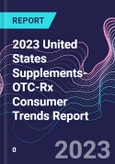With 10+ years of trended data, this report provides the most comprehensive view of how the supplement landscape has changed, along with the most recent and updated information on how consumers think and behave about supplements, prescription drugs, and over-the-counter medications.
This one-of-a-kind report also provides insights into how today’s consumers are confronting their health and wellness and uncovers the health challenges they face.
The overall objectives of the report are to develop unique and specific consumer insights to maximize client learnings and opportunities in attracting new consumers, increasing compliance, and developing compelling messaging and communications strategies.
The Health and Wellness Segmentation Model Methodology
- Development of the Health & Wellness segmentation model began in 2009 with evaluating over 515 different attitudinal and behavioral variables, later narrowed to approximately 19.
- A k-means clustering method was used. Cluster centers were defined as dense regions in the multivariate space based on a k-means segmentation of the attitudinal and behavioral variables from the Health & Wellness Consumer Trends Database survey.
- Health and Wellness segmentation can be used to identify and predict segment membership as part of a quantitative extrapolative analysis of future consumer behavior.
- 5 Unique Segments: each segment is mutually exclusive and is designed to have the maximum differentiation between consumer groups and the maximum homogeneity within each consumer group. The predictive accuracy is high at 92.2%.
- The segmentation has been overlaid on third-party data sets such as Nielsen’s Homescan and can be used in custom/primary qualitative or quantitative research.
Supplements-OTC-Rx Database (SORD) and Report Methodology
- Most comprehensive data and robust data collection vehicle available which examines the intersection of dietary supplements, OTC, and pharmaceuticals
- Ongoing consumer research among U.S. general population adults
- Nationally representative sample of the U. S. population statistically valid at 95% confidence level to +/- 1.2%
- Research previously conducted and trended in USA in 2006, 2009, 2011, 2013, 2015, 2017, 2018, 2020, 2021
- 2022 research was conducted among 3,012 general population consumers and conducted in 4th quarter 2022
- Conducted via on-line methodology
- Trended research also conducted globally in 13 countries








